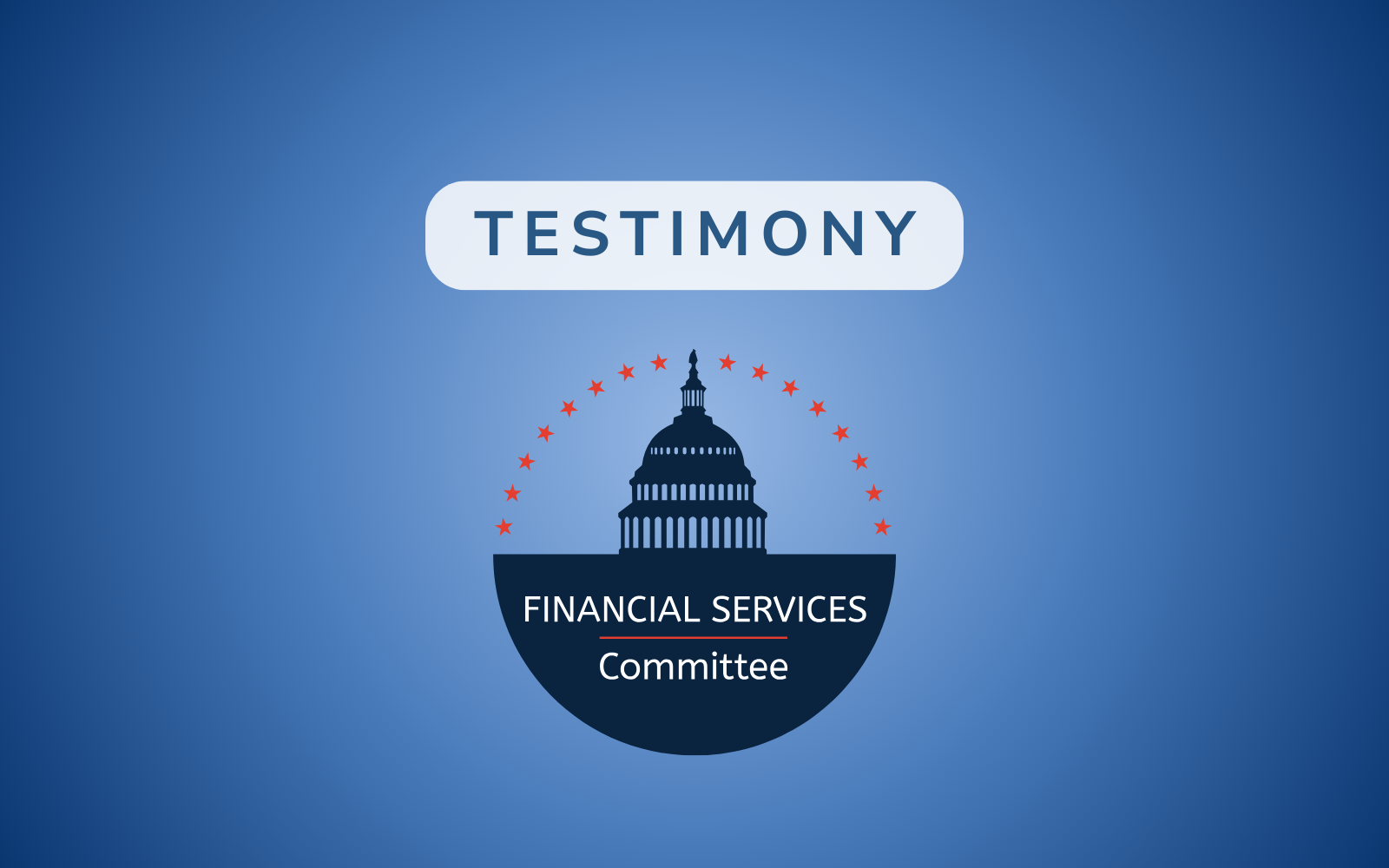Testimony Before House Financial Services Committee Subcommittee on Investor Protection, Entrepreneurship, and Capital Markets
HEARING BEFORE THE SUBCOMMITTEE ON INVESTOR PROTECTION, ENTREPRENEURSHIP, AND CAPITAL MARKETS OF THE COMMITTEE ON FINANCIAL SERVICES OF THE UNITED STATES HOUSE OF REPRESENTATIVES
Building a Sustainable and Competitive Economy: An Examination of Proposals to Improve Environmental, Social and Governance Disclosures
Testimony of Paul S. Atkins
July 10, 2019
Chairwoman Maloney, Ranking Member Huizenga, and Members of the Subcommittee, thank you for the invitation to discuss ESG disclosures and the SEC disclosure regime more generally.
My written testimony provides additional background on SEC disclosure requirements and the legislation under consideration today. I would like to spend my allotted time focusing on the significant costs disclosure mandates impose on businesses large and small, investors, workers, and the American economy.
Over the years, in administering the disclosure regime under the Securities Act and the Securities Exchange Act, the Commission has generally focused on disclosure of information it believes important to the reasonable investor. The SEC explained in 1975 that the requirement that information be material is “necessary in order to insure meaningful and useful disclosure documents of benefit to most investors without unreasonable costs to registrants and their shareholders.”[1]
While many seem to believe that disclosure is costless and harmless, the costs are real. Most significant is the direct cost of the disclosure, which for just three provisions of the Dodd-Frank Act was estimated to total more than $2 billion annually.[2]
Disclosure overload is neither an imagined nor new concept; it has been used as a blunt-force instrument by special interest groups and policy makers alike to attempt to impose normative outcomes. It has been decried by members of the SEC and the Supreme Court for decades.[3] Yet mandatory disclosures have only grown, and there is a growing body of evidence that indicates these ever-expanding and ever-complex disclosure mandates hinder the goal of a sustainable and competitive economy.
Data show that expanding and complex mandates dissuade companies from going public.[4] During the past 20 years, initial public offerings (“IPOs”) have been on the decline in the United States.[5] In 1996 there were more than 600 IPOs in one year, almost a decade later, there were less than 300 over a two-year period.[6]
This downturn doesn’t just affect investors; it affects the broader American economy. It is estimated that as much as 92 percent of job growth occurs after an IPO.[7] A study by the Kauffman Foundation looked at companies that went public between 1996 to 2010 and found they employed more than two million people in 2010 than they did before they went public.[8]
The Treasury Department under President Obama recognized this problem and in 2011 created the private-sector IPO Task Force. The task force surveyed CEOs and found that almost 75 percent cited public-disclosures as their biggest concern about going public.[9] Of public company CEOs surveyed, 92 percent named the burden of public reporting as one of the most significant IPO challenges. An interim report by President Obama’s Council on Jobs and Competitiveness noted that regulations have resulted in fewer high-growth entrepreneurial companies going public.[10]
In 2012, led by members of this Committee, Congress enacted the “Jumpstart Our Business Startups” or “JOBS” Act. The JOBS Act recognized that the public company disclosure regime inhibits companies from going public; the law established a regime to lessen those requirements on new emerging-growth companies.
Beyond company decisions, many ordinary investors are losing out on this valuable investment opportunity, especially compared to high net-worth individuals who can more readily participate in private offerings. Andreessen Horowitz compared the return multiples for tech firms of the 1980s with newer tech firms in the 2000s. In 1986 Microsoft returned just over 200x in private value creation, while its public value creation was roughly 600x. Oracle had similar return ratios in the same year. Contrast this with Facebook in 2012 and Twitter in 2013, nearly all of whose returns were private.[11]
Since the passage of the JOBS Act, the number of IPOs per year has been almost 190, compared to an average 100 per year in the five years prior to enactment. While this is a significant improvement, there is still more that can be done. Unfortunately, while all of the bills under consideration today are undoubtedly well-intentioned, the reality is that many of them set requirements already provided elsewhere in law, at best, or would mostly engender the type of unintended consequences prior efforts have visited upon public companies, their investors, employees, and U.S. economic growth.
I will be happy to answer questions you may have. Thank you.
Paul’s full written testimony can be found here.
[1] See 40 Fed. Reg. 51, 656 (Oct. 16, 1975).
[2] See Pay Ratio Disclosure, 80 Fed. Reg. 50,103 (Aug. 18, 2015); See also Conflict Minerals, 77 Fed. Reg. 56,273 (Sept. 12, 2012); See also Disclosure of Payments by Resource Extraction Issuers, 81 Fed. Reg. 49,359 (Jul. 27, 2016)
[3] See, e.g., Commissioner Troy Paredes, Remarks at The SEC Speaks in 2013, U.S. Sec. & Exch. Comm’n (Feb. 22, 2013), https://www.sec.gov/news/speech/2013-spch022213taphtm#P33_8287; See also Chair Mary Jo White, The Path Forward on Disclosure, , U.S. Sec. & Exch. Comm’n (Oct. 15, 2013), https://www.sec.gov/news/speech/spch101513mjw#_ftn7, See also TSC Industries v. Northway, 426 U.S. 438, 439 (1976).
[4] See Michael Dambra et al., The JOBS Act and IPO Volume: Evidence That Disclosure Costs Affect the IPO Decision, J. Fin. Econ., (Aug. 25, 2014), http://leeds-faculty.colorado.edu/bhagat/JOBSAct-IPO-Volume.pdf
[5] See Craig Doidge et al., The U.S. Listing Gap, 123 J. of Fin. Econ. 464, 467 (Mar. 2017).
[6] See Les Brorsen, Looking Behind the Declining Number of Public Companies, Harvard Law School Forum (May 18, 2017), https://corpgov.law.harvard.edu/2017/05/18/looking-behind-the-declining-number-of-public-companies/.
[7] See IPO Task Force, Rebuilding the IPO On-Ramp, U.S. Sec. & Exch. Comm’n (Oct. 20, 2011),
https://www.sec.gov/info/smallbus/acsec/rebuilding_the_ipo_on-ramp.pdf; See also The
The Economist, A Helping Hand for Startups, The Economist (Oct. 8, 2011), http://www.economist.com/node/21531482; See also IHS Global Insight, Venture Impact Study 2010.
[8] See Kauffman Foundation, Post-IPO Employment and Revenue Growth for U.S. IPOs June 1996-2010, Kauffman Foundation (May 21, 2012), https://www.kauffman.org/what-we-do/research/2012/05/postipo-employment-and-revenue-growth-for-us-ipos-june-19962010.
[9] See IPO Task Force, Rebuilding the IPO On-Ramp, U.S. Sec. & Exch. Comm’n (Oct. 20, 2011),
https://www.sec.gov/info/smallbus/acsec/rebuilding_the_ipo_on-ramp.pdf.
[10] See Jobs Council, Taking Action, Building Confidence, Jobs Council (Oct. 2011), http://files.jobs-council.com/jobscouncil/files/2011/10/JobsCouncil_InterimReport_Oct11.pdf.
[11] See Morgan Bender et al., US Tech Funding, LinkedIn Slide Share (June 2015), https://www.slideshare.net/a16z/state-of-49390473



